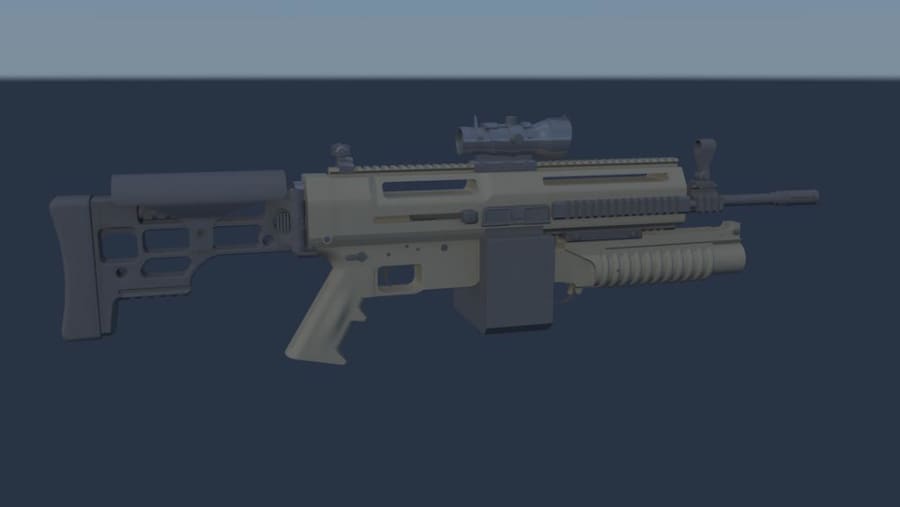The M249 SAW and most other light machine guns (LMG) currently fielded by military’s around the world are outdated. Originally manufactured in the early '80's, their limitations such as painstakingly slow reload times, unreliable feeding mechanisms, lack of modularity, and cumbersome design make them inadequate for today's face paced and fluid battlefields. Despite these drawbacks, the LMG is the keystone of the modern US military fire team. What has kept the SAW and other LMGs fielded this long are their unmatched ability to provide sustained fire compared to other conventional firearms, such as the M16. LMGs achieve this by utilizing large belts of ammunition (50-200 rounds) rather than magazines (30 rounds) at the cost of reliability, weight, and reload speed. There have been attempts to create a hybrid between a rifle and a LMG, such as the IAR by utilizing high capacity magazine (50-100 rounds), but the reliability of high cap mags has been questionable at best and the IAR lack the firepower of a traditional LMG.
Another ability sought after by the US military is modularity. If even a small portion of parts used by the weapons deployed in fire teams are interchangeable, it brings the reliability of the fire team up and save weight and money.
CMR Defense Industries has spent the last 5 years designing a purpose-built weapons system to properly bridge the gap between the LMG and rifle: the XM-10. The highly modular XM-10 can be adapted to just about any engagement scenario. The XM-10 features a proprietary load system incorporating a link-less force-fed design rather than the traditional linked ammunition belts or spring-fed magazines. The feed mechanism ensures each round is properly loaded regardless of fire rate/pattern, remaining ammunition, battlefields conditions, weapon position, as well as eliminates any chance of jamming due to links or miss-feeds.
The XM-10 utilizes a high capacity (150 round) magazine powered by the proprietary load system, allowing it to match the firepower of traditional belt fed LMGs, yet retain the reload speed of a standard rifle. The XM-10 was specifically designed to accept both force-fed and STANAG mags with no operation difference. Other novel features include the ability to automatically switch between open and closed bolt position operation depending on fire selection, quick swap barrels, and a low maintenance design. Additionally the 5.56 NATO and .308 versions of the XM-10 share over 80% similarity in parts allowing the weapon to be easily changed depending on need. Dual overhead buffer springs allow for the compact design and folding stock, well suited for urban warfare and air deployment. The use of novel ceramics and composites increases strength, internal durability, and drastically reduces overall weight.
The XM-10 is compatible with many off the shelf components, such as stocks and grips. The composite portions are being iteratively optimized through 3D printing, while the ceramic components are currently being R&D’d in-house and through outsourced means. All major novel-components of the design are protected by patent law and/or patent pending status under various patent applications.
Voting
-
ABOUT THE ENTRANT
- Name:Derek Redmon
- Type of entry:teamTeam members:Derek Redmon Chris Redmon
- Software used for this entry:CAD
- Patent status:pending





